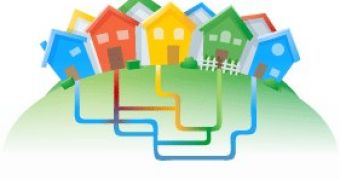Slower than planned, Google is finally starting to get to work on its ambitious gigabit fiber project. A couple of years ago, Google announced that it would be building a fast gigabit network in one or more locations in the US to test new technologies and lower the price of deploying such connections for everyone.
But Google was met with several delays and problems it did not plan for when trying to get things going, after selecting the city where it would build its first network.
Now, after all of the delays, Google is finally ready to start digging and lay down the fiber optics network in Kansas City, both of them.
"We’ve measured utility poles; we’ve studied maps and surveyed neighborhoods; we’ve come up with a comprehensive set of detailed engineering plans; and we’ve eaten way too much barbecue. Now, starting today, we’re ready to lay fiber," Kevin Lo, general manager for Google Access, the part of Google that is building the network, wrote.
Back in early 2010, Google announced a program which would have some 50,000, but as many as 500,000 Americans connected to a high-speed fiber-to-home network which would offer 1 Ggbps at a competitive price.
Google offered to build the infrastructure, but needed a friendly city to do so. Several places in the US went to great lengths to win the contract. Eventually, Kansas City, Kansas was chosen as the first location, one year after announcing the project.
Its sister town, Kansas City Missouri was later included in the plans. However, despite the authorities going to lengths to ensure that Google could deploy the network there, there were some snags along the way. But nothing is stopping Google at this point.
"As we build out Google Fiber, we’ll be taking thousands of miles of cables and stretching them across Kansas City, Kansas and Kansas City, Missouri. Each cable contains many thin glass fibers, each about the width of a human hair," Google explained.
"We’ll be taking these cables and weaving them into a fiber backbone—a completely new high speed infrastructure that will ultimately be carrying Kansas Citians’ data at speeds more than 100 times faster than what most Americans have today," it said.

 14 DAY TRIAL //
14 DAY TRIAL //